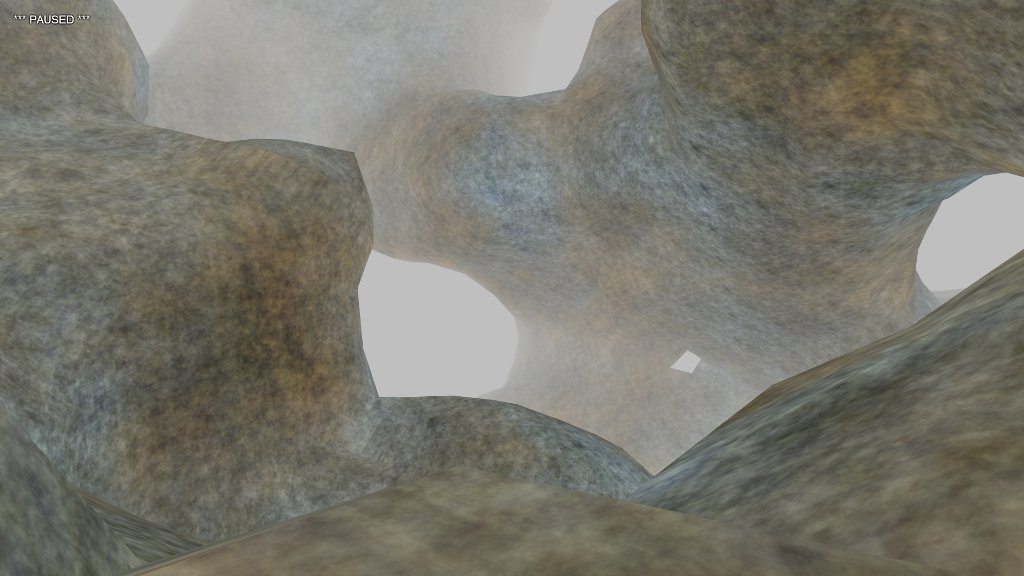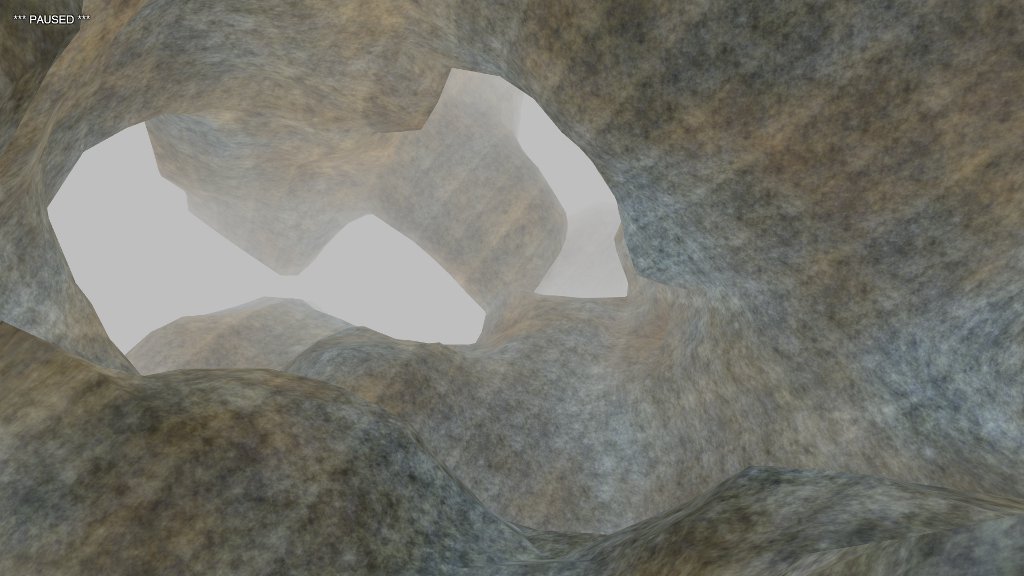I’ve been marching the cubes again, looking for interesting spaces to march them through. Most of these spaces have been based around Perlin noise generators, which simulate smooth functions by interpolating across a grid of random numbers. They do a fine job of creating a blobby-looking world, assuming you like that sort of thing.
Hm. What else you got?
The WebGL Caves demo uses a point field to fine effect, so I thought I’d give that a try. I managed to create things I liked, but I was missing one of the benefits of a noise generator: it’s usable everywhere. Point fields tend to be limited to a finite set of source points. (I suspect an infinite set would have difficulty operating in polynomial time.)
Of course, you can always cheat. Cheaters always prosper, right?
I needed a field function that could simulate an infinite number of points. To keep it simple, I decided to map these points to integral boundaries. (If this were a film, you’d be hearing ominous foreshadowing music right about now.)
// generate the upper and lower bounds var x0 = Math.floor(x); var x1 = x0 + 1; var y0 = Math.floor(y); var y1 = y0 + 1; var z0 = Math.floor(z); var z1 = z0 + 1;
The (x, y, z) point is whatever real point in space we want to get a field value for. I obtain the integral upper and lower bounds. From these, I can build a cube of points that surround the supplied point, and generate a sum of contributions to the total field.
// sum over the contributions to the field // from each point on the cube var f = 0; f += con(x0, y0, z0, x, y, z); f += con(x0, y0, z1, x, y, z); f += con(x0, y1, z0, x, y, z); f += con(x0, y1, z1, x, y, z); f += con(x1, y0, z0, x, y, z); f += con(x1, y0, z1, x, y, z); f += con(x1, y1, z0, x, y, z); f += con(x1, y1, z1, x, y, z);
The con() function supplies a value for the source point, and divides that value by the inverse square of the distance between the source point and the point in space, thus implementing a simple potential field.
function con(x0, y0, z0, x, y, z) {
var dx = x - x0;
var dy = y - y0;
var dz = z - z0;
var d2 = dx * dx + dy * dy + dz * dz;
var v = Math.sin(x0 * 128374.123 * Math.sin(y0 * 2183423.234 * Math.sin(z0 * 94823921.2834 + 19873923.9384 * x0) + 2384923.398293 * z0) + 48392034.837439 * y0);
return v / d2;
}
The weird nested sines thing serves as a sort of noise function. It seems to work well for integral points, and it’s defined everywhere. I also tried lookups of random numbers but that actually ran slower. I’m assuming the nested trig function is JIT-compiled to a few floating point instructions with register access, whereas the table lookup requires hitting the cache.
The end result of all this clever trickery?
Why, it’s another blobby-looking world!
Okay, they’re not exactly the same. The cheater field tends to produce tunnel-like structures instead of blobs, and its surfaces are a little rougher. These differences aren’t that obvious at a casual glance, however. I don’t see it as a viable alternative to using a Perlin noise field.
What went wrong? Well, even though I’m summing over field contributions rather than interpolating, I’m still relying on random noise sampled at integral boundaries. This underlying source tends to express itself no matter what the technique, resulting in what I’ve come to regard as visual monotony. Though the surface you see is actually different everywhere you look, it doesn’t matter. The essential form is always the same.
Now, if I could break up that visual static—clump it, cluster it, gather it all into little structures—I might have something worth looking at. We’ll see where that leads.

